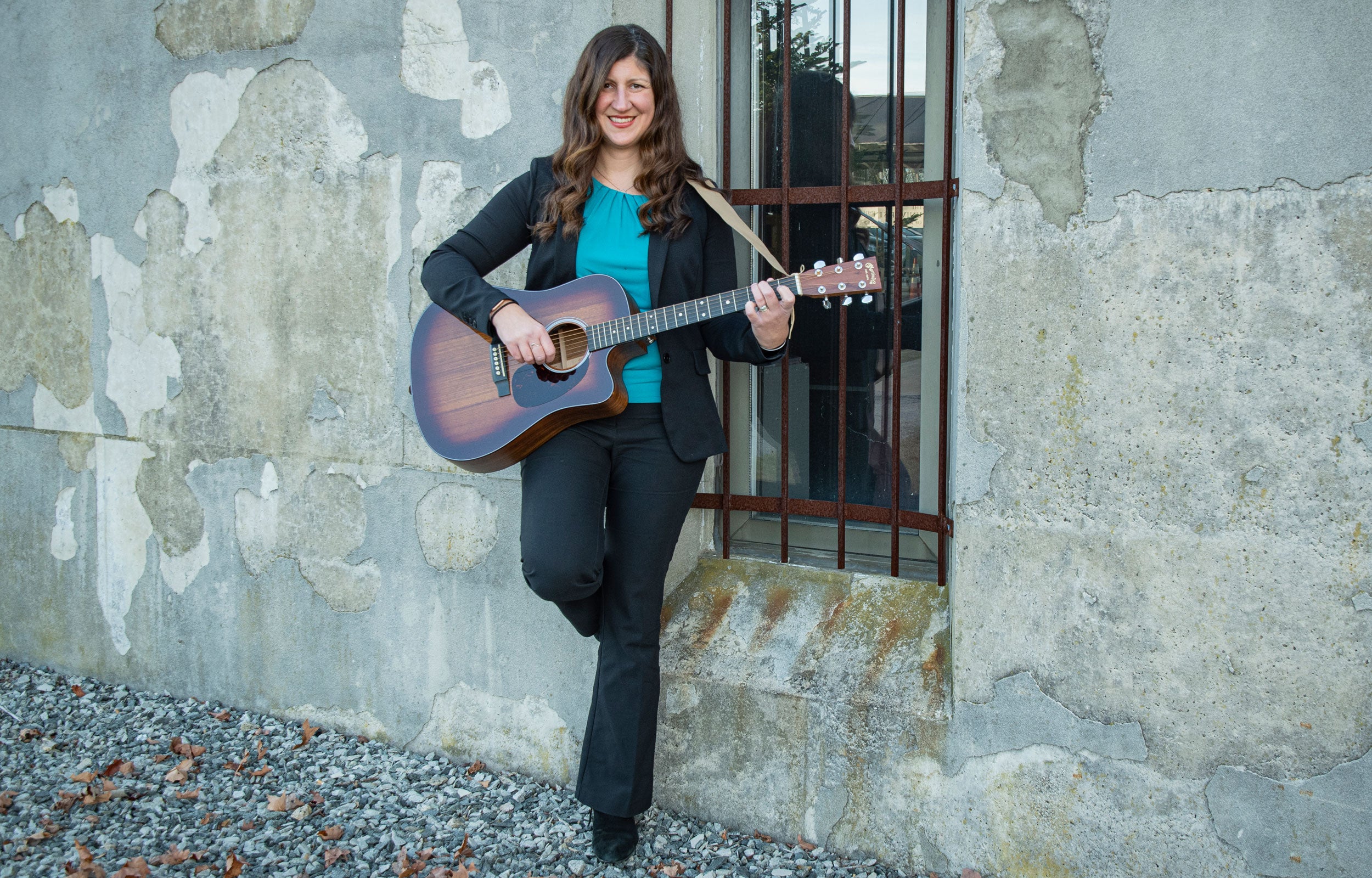
Nicole O’Malley, director of the URI music therapy program, at the Fine Arts Center
Nicole O’Malley, assistant clinical professor of music therapy and director of URI’s music therapy program, holds in her hands a three-ring binder, one of the mammoth ones that can hold a ream of paper, material evidence of a program (and a philosophy) decades in the development.
Now in its second year, URI’s music therapy program has 12 students, and interest continues to grow.
O’Malley is a bit awed by it all. Creating the music therapy program was not something she’d planned or even had interest in— initially. O’Malley didn’t want to be a teacher; she was already running a non-profit, Hands in Harmony, managing her clinical practice, and raising two young children. A few years earlier, she’d written the standards for state laws concerning the certification of music therapy practitioners. She had enough to keep her busy.
But consulting on a program for URI led to an invitation to implement the five-year program in 2019 and then, at the urging of department chair Mark Conley, to teach a class. And it took just the one class for O’Malley to make a startling discovery. “Watching my students grow, seeing those aha moments when they started making connections and applying what they’ve learned—I loved it.
“They care so much about their growth and about the field, and I am passionate about helping support each individual student, whether they stay on the path to become music therapists or find something else musically,” O’Malley continues.
URI’s music therapy bachelor’s degree trains students in healthcare therapies that improve the sensorimotor, cognitive, language, emotional, and/or social functioning of their clients. It is the only music therapy program in New England to offer an on-campus clinic for students’ clinical training. By graduation, students complete 1,200 hours of clinical training in preparation for national board certification.
A versatile degree in high demand
O’Malley prizes preparedness and thoughtfulness in her students and holds them to the rigorous standards she sets for herself as a practitioner.
Music therapists are in high demand. They work in hospitals, schools, long-term care facilities, and neuro-rehabilitation centers. They are employed by psychiatric practices and community centers (where some use music and songwriting to promote social justice and change).
“In the first five years of my career, I had to spend a lot of time in court advocating for clients. To prepare, I would really dig into the literature and make sure my data was very solid with every client,” she says. “I’d create reports and develop standards that were so high that they couldn’t be disputed in court. I believe we should teach our students how to meet those standards.”
O’Malley also wants her students clear-eyed about the challenges therapists face. Music therapy students begin working their clinical hours in their sophomore year, and it’s an emotional experience. “I like to sit with students and ask them: What is going to get you through your most tumultuous day when you have everything being thrown at you? Because all careers are going to have those days, no matter whether you choose performance, or music education, or therapy. I tell them, ‘You’re going to laugh and you’re going to cry.’ In my practice, I’ve seen thousands of people and sometimes what people have been through is just so horrific that you take a piece of that with you forever. Sometimes it passes through you and moves on; other times, cases stick with you for life.”
The goals: career success and personal happiness
“A lot of the work I’m doing with the sophomores right now concerns how to handle challenging situations and how to be strong clinicians in the face of such heavy work. You have to find a release and you’re not always trained to do that. So, I spend time talking with them as a group—and individually—so they can be not only successful but also happy.”
O’Malley’s efforts don’t go unnoticed. Classical saxophonist Katelyn Belyea ’24 says she appreciates O’Malley’s frequent check-ins. “She emphasizes students’ physical and emotional needs, needs that are often left forgotten in a rigorous learning environment like this program,” Belyea says. “She helps us explore various routes of self-care and demonstrates how to incorporate them into our busy schedules.”
These are lessons for life, O’Malley says.
“I tell them, ‘You’re going to make mistakes, and when you think about them later, you’re going to wonder, if you’d done something differently, would that person be in a different space?’ As a therapist, you have to find a way to course correct.”
Because, O’Malley says, every experience—and emotion—is on-the-job training. And all contribute to cultivating fortitude, resilience, and self-awareness. “If I don’t recognize and work through the emotions my work brings up, especially the emotions I don’t need or want, then I’m not going to be able to access the ones I do need and want. And the other ones are just going to come out when I don’t want them to.
“You need to be able to access feelings and emotions; you have to have deep empathy. You can be compassionate and caring and data-focused and scientific,” O’Malley says.
“Evidence and emotion drive me. That’s the way I teach.”
—Marybeth Reilly-McGreen

